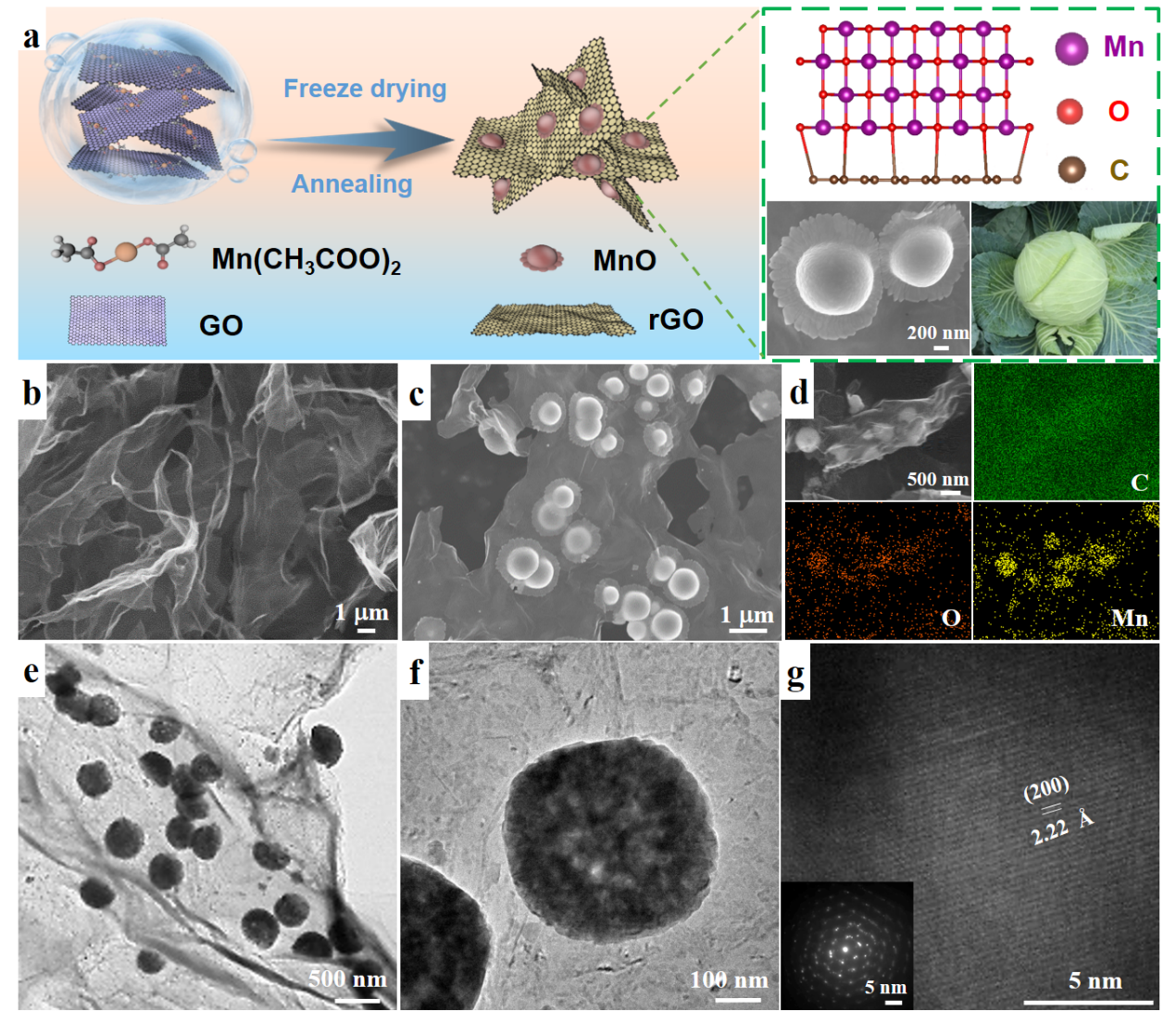W.J. Liu, X. Zhang*, Y.N. Xu, L. Wang, Z. Li, C. Li, K. Wang, X.Z. Sun, Y.B. An, Z.-S. Wu*, Y.W. Ma*
Advanced Functional Materials, 2022, 32, 2202342.
DOI: 10.1002/adfm.202202342 [PDF]

The delicate structural engineering is widely acknowledged as a powerful tool for boosting the overall electrochemical performance of conversion-type anode materials for lithium storage. Here, a general electrostatic self-assembly strategy is proposed for the in-situ synthesis of MnO nano-cabbages on negatively charged reduced graphene oxide (rGO/MnO).The strong inerfacial heterostructure and robust Li storage mechanism[ZW1]related to fast Li+diffusion kinetics and high Li-adsorption ability of rGO/MnO heterostructure are confirmed through operando experimental characterizations and theretical calcalution. Owing to the rapid charge transfer, enriched reaction sites, and stableheterostructure, the as-synthesized rGO/MnO anode delivers a high capacity of 860 mAh g−1(at 0.1 A g−1), superiorrate capability[ZW2], and cycle stability. Notably, the as-assembled flexible pouch cell of activated carbon//rGO/MnO solid-state lithium-ion capacitors possess exceptional energy density of 194 Wh kg−1and power density of 40.7 kW kg−1, both of which are among the highest flexible LICs reported so far. Further, our LICs possess ultralong life-span with ~77.8% retention after 10000 cycles, and extraordinary safety, demonstrative of great potential for practical applications.
[ZW1]What is the key and different point? It is better to specify them?
What is the different mechanism?
[ZW2]can give some key values